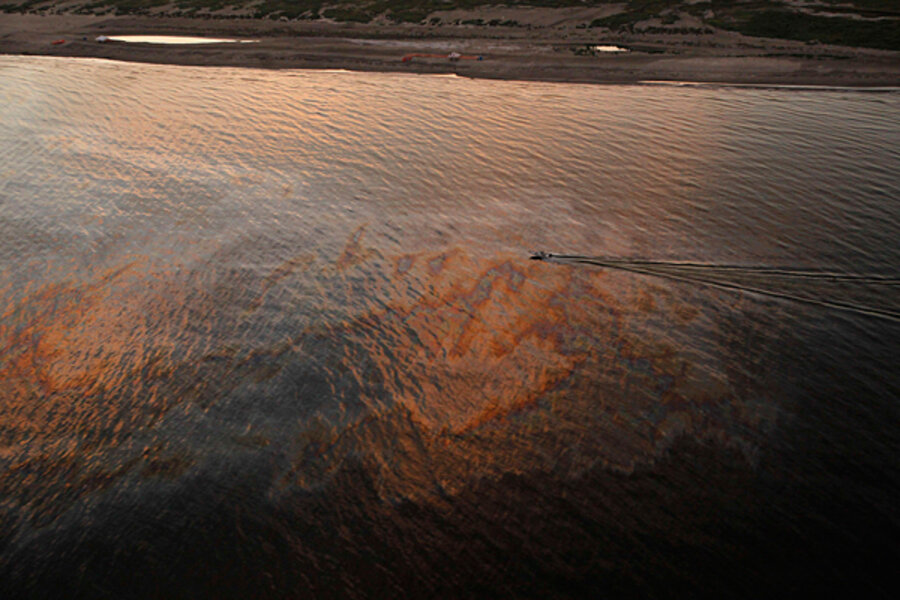Gulf oil spill biggest ever, could cost BP $21 billion in fines
Loading...
The Gulf oil spill blowout was so large and intense that by the time BP capped the well in mid-July, pressure within the estimated 50 million barrel reservoir beneath it had declined noticeably.
The government panel tasked with measuring the flow rate from the well released new data Monday night. The panel suggests that the well released 62,000 barrels (2.6 million gallons) of oil a day initially, but that it eventually slowed to 52,000 barrels a day by June.
Over the course of the blowout – from April 20 to July 15 – the Macondo well gushed 4.9 million barrels of oil, making it the largest accidental oil spill in world history, according to the panel. Specifically, the Gulf oil spill now officially outpaces the 3.3 million barrels released in the 1979 Ixtoc spill, which occurred in a different part of the Gulf of Mexico.
IN PICTURES: The Gulf oil spill's impact on nature
The release of oil in the aftermath of the 1991 Iraq war may have resulted in more than 4 million barrels being released into the Persian Gulf, but, officially, that is classified as a war event, not an accident.
Most directly, the estimate will affect how much BP will have to pay in fines as a result of the spill. If courts deem BP grossly negligent in the spill – which would bring a steeper penalty – total fines could run to $21.1 billion. If BP is not deemed grossly negligent, that figure would shrink to $5.4 billion.
But the new estimate also raises more questions about early downplaying of the flow rate by BP and its effect on the government's response to the spill.
"The Obama administration had absolutely no answers on how to deal with this, and so they [said], 'Let's just keep BP in charge,'" says Tyson Slocum, a policy expert at the non-partisan Public Citizen, a government watchdog group. "That did come to the detriment of … having early scientific analysis of the flow rate … which could have helped to better inform the government's response."
The estimate was partly made possible by the containment cap placed over the well, which has allowed scientists to gauge well pressure. The findings show that the flow rate was about 12 times greater than the initial estimate by BP and the Coast Guard.
BP has defended the early estimates, saying it had no accurate way to measure the flow before it placed the containment cap on the well.
But some scientists have complained that, early on, BP attempted to block efforts to get better, more high-resolution images of the leaks that would have helped in calculating the flow. Mr. Slocum suggests that this could be a result of BP's "internal confidence" that it would be able to control the gusher quickly and limit its per-barrel liability.
The spill estimates went from an estimate of zero spillage on the day after the sinking of the Deepwater Horizon on April 20 to 1,000 barrels a day. That estimate was raised to 5,000 barrels a day, partially under pressure from the government.
Once the BP live feed came online, the estimate was raised to 12,000 to 19,000 barrels a day. By June, government scientists pegged it at between 20,000 to 40,000 barrels, and a few weeks later that estimate rose to between 35,000 to 60,000 barrels a day.
BP efforts to siphon some oil to the surface captured about 800,000 barrels of oil, meaning about 4 million barrels of oil entered the Gulf, according to the new estimate.
IN PICTURES: The Gulf oil spill's impact on nature
Related:





